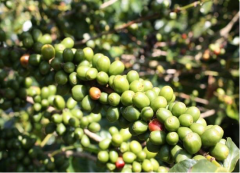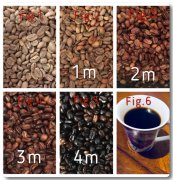Yega Sheffield, Gotti, Asasha, washing treatment, how to bake coffee beans
For professional baristas, please follow the coffee workshop (Wechat official account cafe_style)

Yega Sheffield Godibe Asasha G1 washing treatment (Ethiopia Gedeb Asasa Washed G1)
Production area: Gedeb
Raw bean treatment: washing treatment
Coffee varieties: native species of Heirloom
Grade: G1
Appearance: .4 dash 300 grgrgr15 + Screen
Flavor introduction
This is definitely a Yejia Xuefei that can perform well in different baking degrees. Dry aromas with sugar aromas, with aromas of spiced tea and lime peel.
Light baking can show fresh floral fragrance and obvious sweetness.
The medium-roasted wet coffee powder has the smell of caramel and ginger powder, the cherry aroma overflows with the steam, and when the residue is broken, it releases a strong jasmine flavor. The same floral fragrance is also present in the coffee flavor, which can be clearly felt from the first sip.
Medium baking + highlights the sweetness of honey and sugar, with subtle citrus flavours, similar to sweet limes and lemonade, and a pleasant finish reminiscent of whole-grain crackers. Citrus acid is very prominent in the overall flavor, and the aftertaste moves between scented tea and chewing gum.
Medium and deep baking can bring out more intense fruit flavor, as well as the bitter sweet flavor of chocolate bar, as well as grape aroma.

About Gedeb processing Plant
In fact, Gedeb is a local name, located south of Yejassefi, but the bean processing plant named Gedeb; the processing plant has about 700 local members.
In fact, the farms of local coffee farmers are just "gardens" with a slightly larger area adjacent to their homes. The coffee varieties planted are all Arabica varieties handed down from Ethiopia. When the coffee is sent to the processing plant, it is still intact, which is graded and dried on a drying bed. After sun treatment, raw coffee beans go through repeated hand-selected procedures to prevent defective beans from getting mixed in.
The competition in this producing area is fierce, so coffee farmers can get a good price by picking their own coffee fruits. The increasingly fierce competition among washing treatment plants helps these small farmers to make high profits. For example, the prices earned by these small farmers for picking and selling high-quality coffee fruits this year are higher than those of last year. In fact, you who buy this high-quality coffee beans also indirectly help small farmers to live a better and better life.
Important Notice :
前街咖啡 FrontStreet Coffee has moved to new addredd:
FrontStreet Coffee Address: 315,Donghua East Road,GuangZhou
Tel:020 38364473
- Prev

Are all Kenyan Coffee sour? introduction to the great influence of roasting degree on coffee flavor
Professional baristas exchange please follow the coffee workshop (Wechat official account cafe_style) Kenya Coffee Nie Green AA washing treatment (Kenya Nyeri Kiawamururu AA) varieties: SL-28 raw bean treatment: washing treatment grade: AA appearance: .6dpare 300grMere 17-19 screen Flavor introduction: red fruit aroma is the most obvious in the dry aroma.
- Next

Start a trip to roast coffee beans from the microwave oven how to bake coffee beans in the microwave oven?
Professional baristas follow the coffee workshop (official Wechat account cafe_style) it is said that a sage sits on the edge of a cliff and tells the world that the coffee journey begins with a cup of Yega snow coffee. Yejia Coffee Bean (Yirgacheffe), a coffee with a unique style, is native to Ethiopia, Africa. Its performance-to-price ratio is considered to be as good as other famous coffee beans.
Related
- Beginners will see the "Coffee pull flower" guide!
- What is the difference between ice blog purified milk and ordinary milk coffee?
- Why is the Philippines the largest producer of crops in Liberia?
- For coffee extraction, should the fine powder be retained?
- How does extracted espresso fill pressed powder? How much strength does it take to press the powder?
- How to make jasmine cold extract coffee? Is the jasmine + latte good?
- Will this little toy really make the coffee taste better? How does Lily Drip affect coffee extraction?
- Will the action of slapping the filter cup also affect coffee extraction?
- What's the difference between powder-to-water ratio and powder-to-liquid ratio?
- What is the Ethiopian local species? What does it have to do with Heirloom native species?

